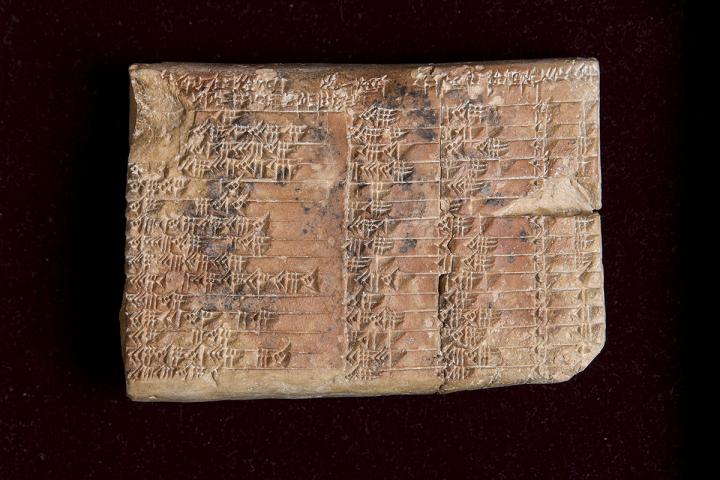Australian scientists appear to have cracked the code of a 3,700-year old Babylonian clay tablet.
It is, they reckon, the world’s oldest (and most accurate) trigonometric table, and could have been used to help build ancient palaces, temples and canals.
The new research, our of University of new South Wales, Sydney, indicates that it was the Babylonians, not the Greeks, who first studied trigonometry, a math focused on triangles. Plimpton 322, as the the small tablet is known, was discovered in the early 1900s by the historic fugure on whom the character Indiana Jones was based. Archaeologist Edgar Banks found it in what is now southern Iraq.
On it are four columns and 15 rows of numbers written using a base 60, or sexagesimal, system. An alternate theory had been that it was a teacher’s aid used to check students’ solutions to quadratic equations.
Said Daniel Mansfield: “The huge mystery, until now, was its purpose – why the ancient scribes carried out the complex task of generating and sorting the numbers on the tablet. Our research reveals that Plimpton 322 describes the shapes of right-angle triangles using a novel kind of trigonometry based on ratios, not angles and circles. It is a fascinating mathematical work that demonstrates undoubted genius.”
Mansfield and collaborator Norman Wildberger have published their findings in Historia Mathematica. Prior to this, it was the Greek astronomer Hipparchus (who lived about 120 years BC) that was credited as the father of trigonometry. Hipparchus’ “table of chords” was thought to be the oldest trigonometry table. Said Wildberger: “Plimpton 322 predates Hipparchus by more than 1,000 years. It opens up new possibilities not just for modern mathematics research, but also for mathematics education. With Plimpton 322 we see a simpler, more accurate trigonometry that has clear advantages over our own.”
Mansfield and Wildberger agreed to study Plimpton 322, Babylonian mathematics generally, after realizing that it had parallels with the rational trigonometry of Wildberger’s book Divine Proportions: Rational Trigonometry to Universal Geometry. The tablet’s rows describe a sequence of 15 right-angle triangles, decreasing in inclination. Though the left edge of the tablet is broken, the researchers believe there were originally 6 columns and that the tablet was meant to be completed with 38 rows. With this, they reckon, scribes using a base 60 numerical arithmetic similar to our time clock, could have generated the numbers on the tablet.
If our reporting has informed or inspired you, please consider making a donation. Every contribution, no matter the size, empowers us to continue delivering accurate, engaging, and trustworthy science and medical news. Independent journalism requires time, effort, and resources—your support ensures we can keep uncovering the stories that matter most to you.
Join us in making knowledge accessible and impactful. Thank you for standing with us!

